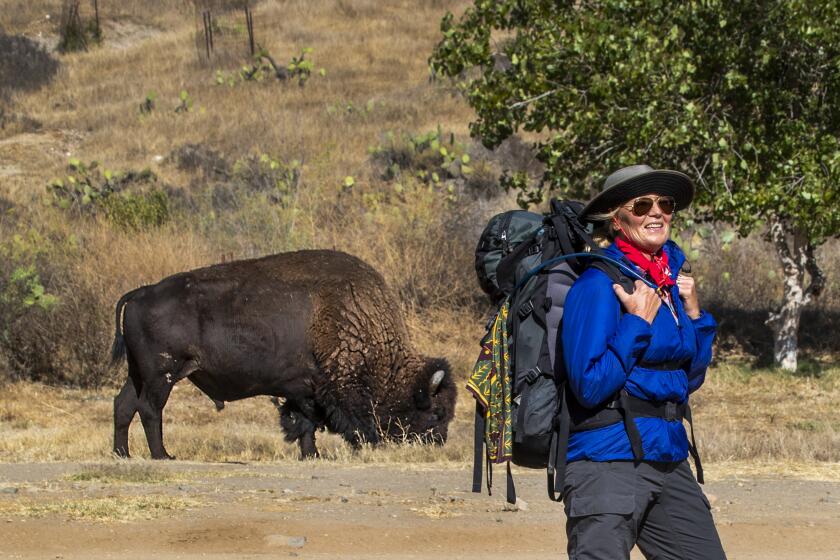Denver donates bison to tribes with plans to restore herds
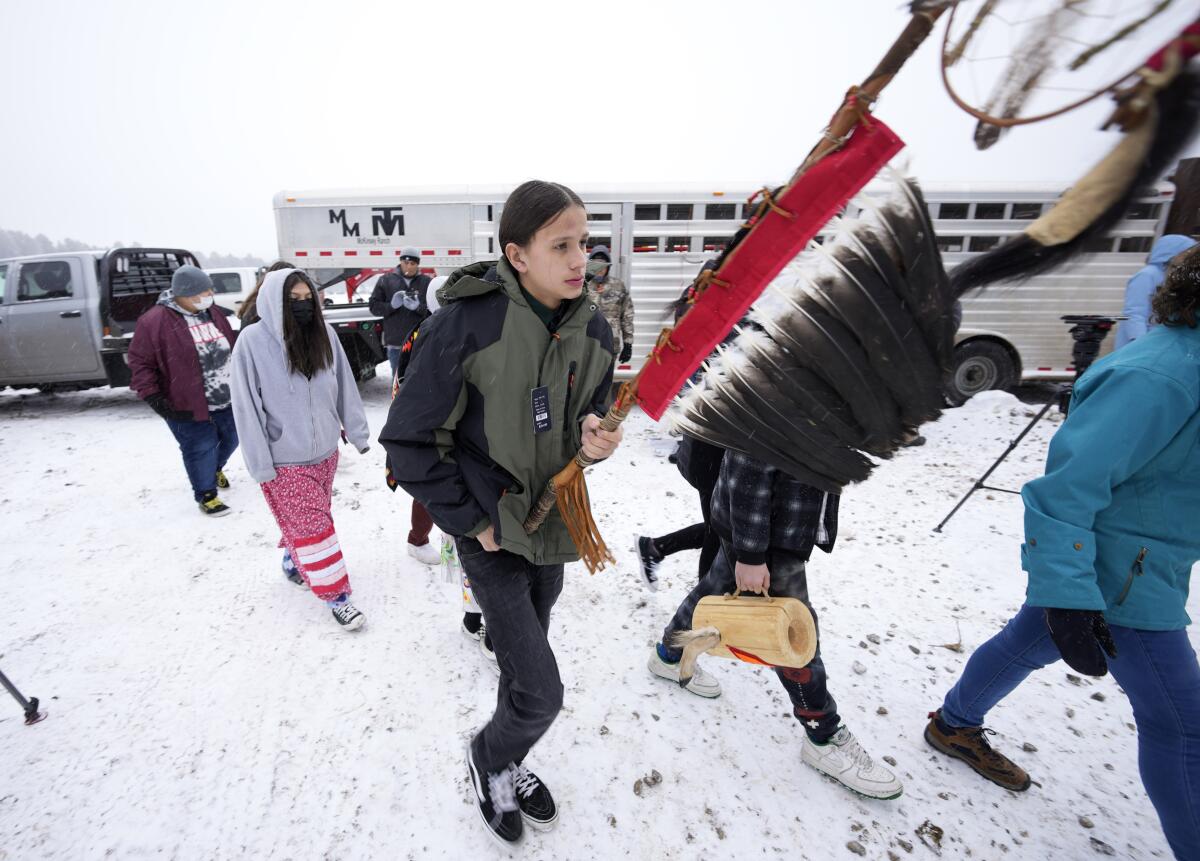
- Share via
GENESEE PARK, Colo. — Amid falling snow, pounding drums and burning sage, the city of Denver on Monday handed off 33 young, snorting bison to members of the Arapaho and Cheyenne tribes seeking to restore the iconic animals to their tribal lands.
“The goal is to someday have thousands of buffalo,” said Jordan Dresser, chairman of the Northern Arapaho. “We are growing the herd and had a calf born last year, which was a huge moment for us.”
For years, Denver auctioned off surplus bison from its two herds, descendants of the last wild bison in North America, to keep their numbers healthy. But in 2020, the city adopted a “land acknowledgment” calling for the dismantling of “ongoing legacies of oppression and inequities.” With that in mind, the City Council passed an ordinance last year to donate surplus bison to Indigenous tribes.
A plan to boost eco-tourism on Catalina Island by increasing the number of bison has recharged a debate over the environmental impacts of the shaggy beasts
On Monday, the Northern Arapaho in Wyoming were given 15 bison, the Cheyenne and Arapaho tribes in Oklahoma received 17, and the nonprofit Tall Bull Memorial Council in Colorado got one.
The move comes as tribes across the country are restoring bison, which they call buffalo, to their lands, where they play crucial roles in Native American culture and spirituality.
“They were not only our food but they were our tools, our homes,” said Elma Brown, interim chief executive of the Northern Arapaho. “We have a pasture where we can go out and pray with them.”
For generations, Cheyenne and Arapaho hunters moved like waves across the Plains, chasing seemingly endless herds of bison, which sustained their way of life.
When settlers began arriving, all that changed. The railroads brought them close to the herds and repeating rifles let them kill quickly. They commenced a slaughter that drove the enormous mammals to the brink of extinction.
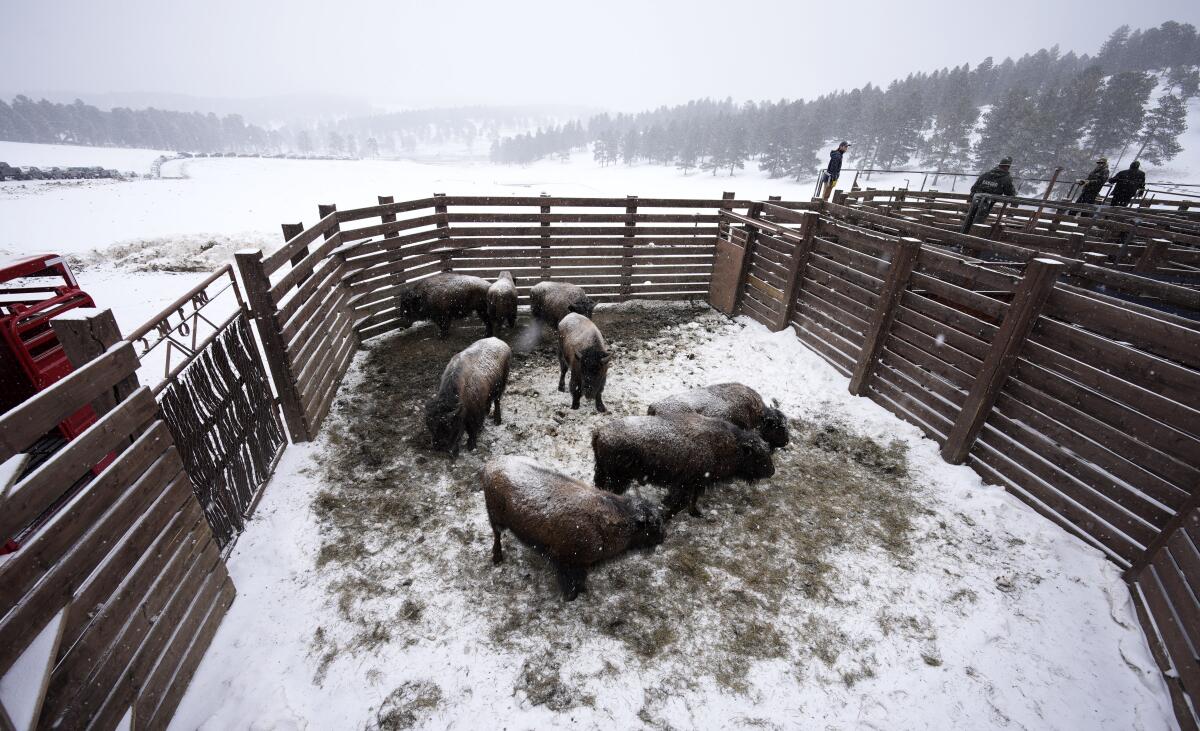
Some were skinned for pelts, others had their tongues — considered a delicacy — torn out, and even more were left to rot. Killing bison wasn’t merely for pelts or sport, many Indians say. It was also a way to control the Indigenous inhabitants while trying to occupy their lands.
“You are talking about reducing 30 to 50 million animals down to maybe 1,000 in 100 years. The scale of slaughter was immense,” said Pat Thomas, who recently retired as associate director of the Bronx Zoo and vice president of the Wildlife Conservation Society.
The Bronx Zoo pioneered the reintroduction of bison into the wild. Its first director, William T. Hornaday, aided by Theodore Roosevelt, helped start the American Bison Society in 1905. They sent herds to South Dakota and Oklahoma, where they thrived. Over the years, more have followed.
“Today there are more than 500,000 bison in the U.S. and Canada, and the species is probably secure,” Thomas said.
The InterTribal Buffalo Council, dedicated to restoring buffalo to reservations, has returned about 20,000 bison. Some are used for meat, some for ceremonies, some for economic development. For many, simply sharing the land again with animals they consider sacred is satisfaction enough.
“Many of our tribes have very old stories and oral traditions about the importance of the animal as a gift to us from our creator,” said Jason Baldes, tribal buffalo program manager for the National Wildlife Federation and a board member of the InterTribal Buffalo Council. “The buffalo was life’s commissary; it was our store. Food, shelter and tools. Our ceremonies directly tied to that animal.”
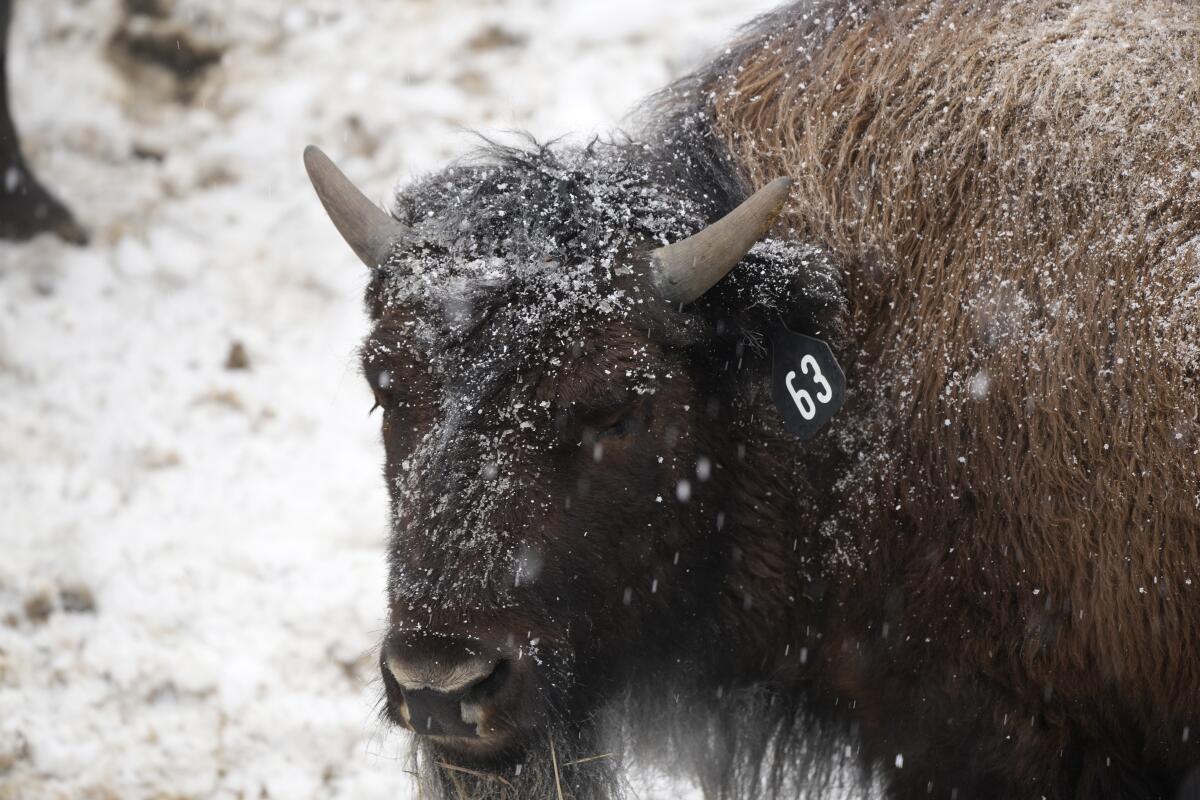
Baldes, a member of the Eastern Shoshone Tribe, recalls a 1997 trip he made with his father, a wildlife biologist, to East Africa to watch the annual wildebeest migration. He drove 100 miles on dirt roads and saw wildebeest in every direction.
“There were 1.5 million animals, but what was more unfathomable was that was less than 5% of the buffalo we once had here,” he said.
That epiphany led Baldes to help bring 10 buffalo to the Eastern Shoshone part of the Wind River Reservation it shares with the Northern Arapaho in central Wyoming. Now the Eastern Shoshone have 65 buffalo and the Northern Arapaho 32.
Baldes said efforts to save Indigenous languages and cultures are crucial, but the bison is just as important.
“We need to make sure our animals are regrounded in our history, and the buffalo is the foundation of all that,” he said.
Baldes was one of dozens of tribal members and city officials who took part in the ceremony Monday in Genesee Park, in the foothills outside Denver. Park rangers used their pickups to gently coax the boisterous yearlings from a fenced-in area toward the corral. Heavy snow fell, clinging to their thick fur. The bison bucked and snorted, their big eyes peering between the wooden slats of the corral.
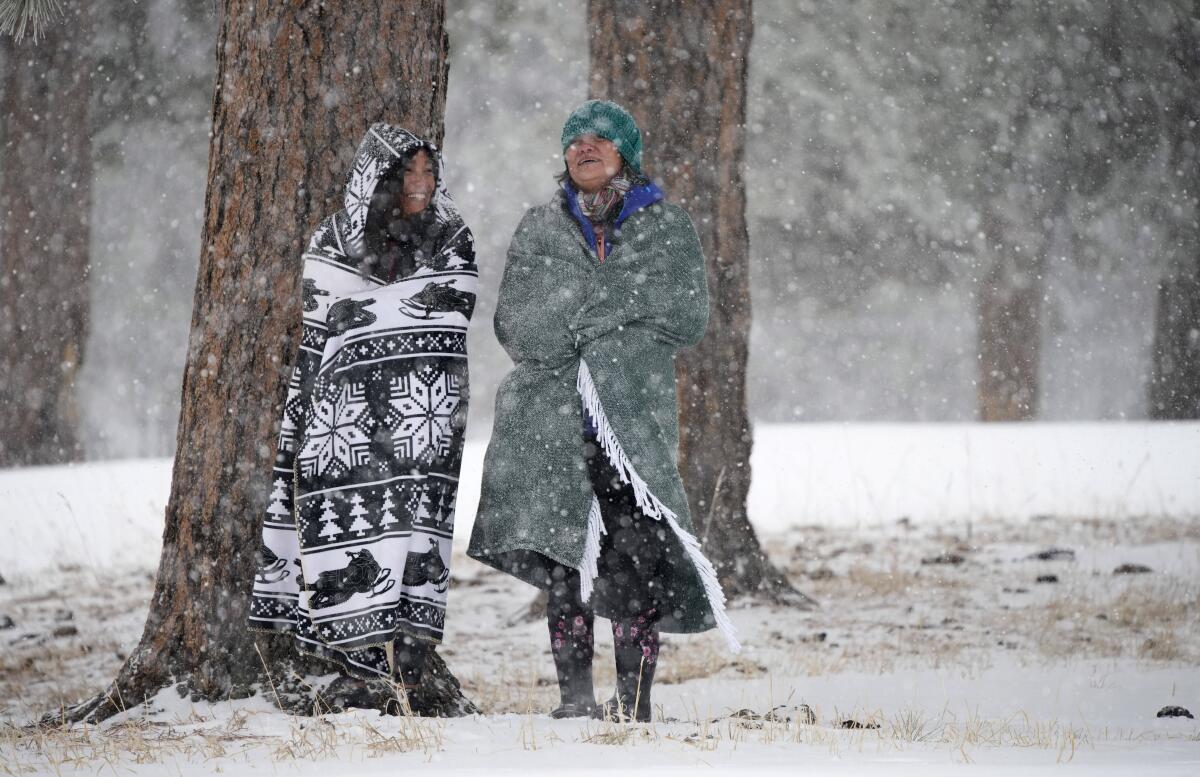
A few yards away, Sid Whiting Jr., a Sican’gu Lakota, waved an eagle’s feather over burning sage. He sang a song and then spoke of “new beginnings” and commemorated the return of the “thunder beasts” to the tribes.
Denver Mayor Michael Hancock said the city should have been giving the animals back to the tribes for decades.
“We are honored to be your partners,” he told the group. “Quite frankly, this is one of the proudest efforts we have undertaken since I have served as mayor.”
As more buffalo charged into the waiting trailers, a circle of young men pounded drums and raised their voices. Snow fell on the blankets around their shoulders.
Tribal members looked into the trailers. Agitated bison looked back.
One woman spoke softly to the shaggy beasts.
“It’s going to be OK, it’s going to be OK,” she told them.
It was time to go home.
Kelly is a special correspondent.
More to Read
Sign up for Essential California
The most important California stories and recommendations in your inbox every morning.
You may occasionally receive promotional content from the Los Angeles Times.
